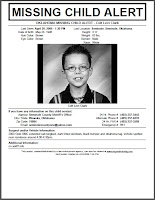| Brad’s Suburban |
Why America’s Long Haul Truckers Deserve TV Service

Social Networking and Missing Kids
A Father’s Hope
Casey’s Eyes!
Double, Double Toil and Trouble; Fire Burn, and Caldron Bubble
Sex, Lies and Videotape
The Ultimate Betrayal
The Casey Anthony trial is demonstrating something I have known for far too long: the great drama in the courtroom is not demonstrated through stunning revelations; instead it is demonstrated via raw, unfiltered emotion. An intimate drama played out in court as the final and defining 911 call was being played for the jury, the call made by Cindy Anthony only moments after learning that her beloved granddaughter had been missing for more than a month. Prosecution witness Cindy Anthony slumps in the witness stand doubled over in the agony of loss, grieving for the three-year-old granddaughter that defined her world as her recorded voice repeated, “I have a 3-year-old who has been missing for a month.” At the defense table, murder defendant Casey Anthony offered the jury a peek into the black void of her soul, betraying no emotion as her mother’s voice reverberates throughout the courtroom, “it smells like there’s been a dead body in the damn car.”
Happy Birthday Colton Clark! Where in the world are you?
California Sex Offenders Have a Friend In Sacramento: His Name is Tom Ammiano
Opposition included: Legal Services for Prisoners with Children; California Coalition for Women Prisoners; California Attorneys for Criminal Justice, and the ACLU.














